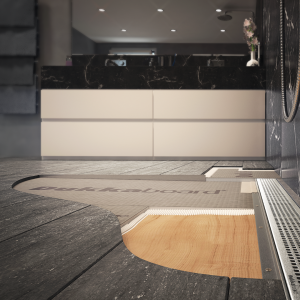When it comes to tiling, attention to detail is crucial for achieving a flawless and durable result. Among the various factors that influence the tiling process, temperature plays a significant role. Proper temperature control ensures proper adhesive curing, prevents premature drying, and promotes optimal bonding. In this blog, we will explore the recommended temperatures for different stages of tiling, helping you achieve a professional finish that will stand the test of time.
Ideal Room Temperature
Before you even begin the tiling process, it’s important to ensure that the room where the tiles will be installed maintains an optimal temperature. The ideal room temperature for tiling generally falls between 65°F (18°C) and 75°F (24°C). This range provides a comfortable working environment and allows for proper adhesive curing.
Tile Temperature
Apart from the room temperature, it is also essential to consider the temperature of the tiles themselves. Ideally, the tiles should be stored and acclimated to the room temperature for at least 24 hours before installation. This allows the tiles to adjust to the ambient conditions, minimizing the risk of expansion or contraction after installation.
Adhesive Temperature
The temperature of the adhesive or mortar used for tiling is crucial for proper curing and adhesion. Most tile adhesives have recommended temperature ranges specified by the manufacturer. As a general guideline, the adhesive temperature should be maintained between 50°F (10°C) and 100°F (38°C) during application and curing. Extreme temperatures can affect the adhesive’s performance, making it either dry too quickly or take an excessively long time to set.
Substrate Temperature
The substrate refers to the surface on which the tiles are being installed, such as a concrete or wooden floor. The substrate temperature is equally important, as it can affect the adhesive’s ability to bond with the surface. The substrate temperature should ideally be within the same range as the room temperature, between 65°F (18°C) and 75°F (24°C). A significant temperature difference between the substrate and the adhesive can lead to uneven drying and reduced bond strength.
Grout Application
Once the tiles are properly installed and the adhesive has cured, it’s time to apply grout. Grout is typically applied in the gaps between the tiles to provide stability and prevent moisture penetration. The recommended temperature range for grout application is usually similar to that of the adhesive, falling between 50°F (10°C) and 100°F (38°C). Avoid working with grout in extreme temperatures as it may lead to improper curing or inconsistent coloration.
Maintaining the recommended temperatures throughout the tiling process is essential for achieving professional and long-lasting results.
From the room temperature to the adhesive, substrate, and grout, each element plays a critical role in the overall tiling outcome. By adhering to the temperature guidelines provided by manufacturers and considering the environmental conditions, you can ensure that your tiled surfaces are not only visually appealing but also robust and durable.
Happy tiling!





